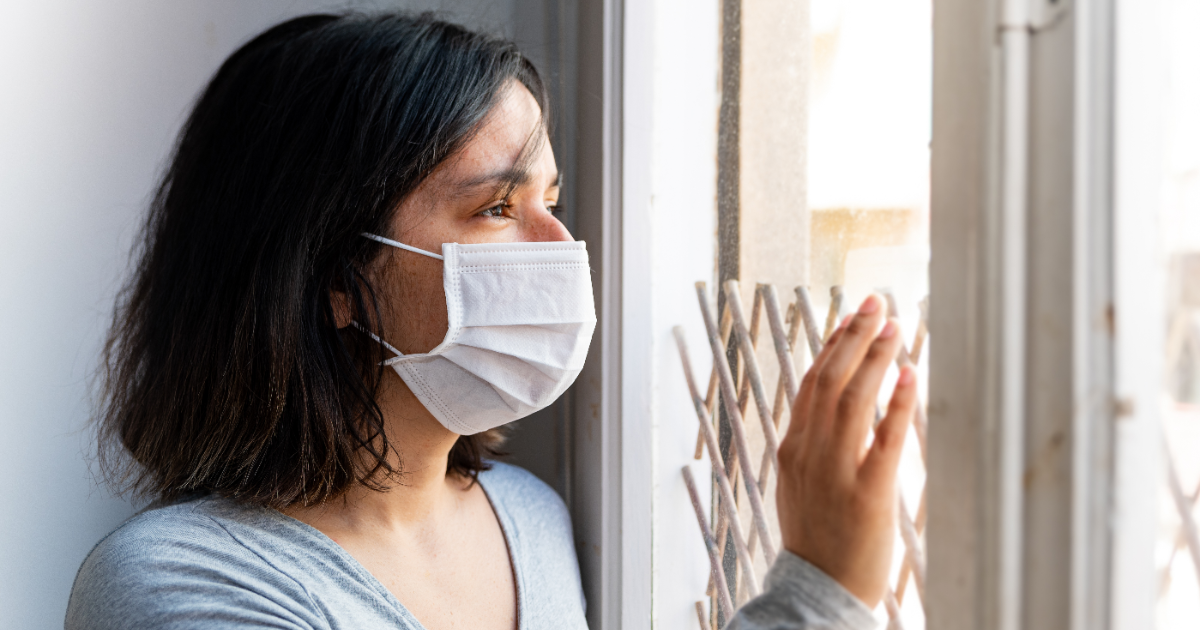

COVID-19, Depression, and Suicide
Lessons from the Coronavirus Part 8
06/5/20
John Stonestreet Roberto Rivera

From the start of the COVID-19 pandemic, experts warned of its impact on people with mental illnesses. For those with mood disorders, the pandemic packed a “one-two” punch: the depression and anxiety caused by the fear of contracting the coronavirus itself, and the depression and anxiety accelerated by measures taken to combat the spread of the coronavirus. Even the wide use of the term “social distancing” instead of the more accurate “physical distancing” communicated isolation and the loneliness.
Add to all that canceled appointments with psychiatrists and therapists, and we should expect a steep decline in mental health. Which is exactly what happened.
A recent Census Bureau survey of 42,000 adults found that “24% of [the respondents] showed clinical signs of severe depression, and 30% showed signs of anxiety.” According to the study, “The rate of anxiety and depression were highest among young adults, women, and the poor.” To put these numbers in better context, half of American adults said that they had felt depressed during the pandemic, while only a quarter reported similar feelings in a survey done six years ago.
Things could even be worse than this survey, which was conducted between May 7th and May 12th, suggests. After all, three more weeks of social isolation and disruption could not have made things better. As the Washington Post said, “the results reflect a deepening of existing trends,” such as “rising depression, stress, and suicide,” especially among young adults. Writers in the Journal of the American Medical Association call the combination of COVID-19 factors with already existing suicide mortality trends, “a perfect storm.”
Perhaps. It will be a while before we can say with any certainty if and how COVID-19 affected suicide rates. What we do know is that COVID-19 is attacking a nation already emotionally and mentally fragile.
This fragility is, as we often say of other things, downstream from the rest of culture. Some of what makes people depressed and anxious is biology, but much of it has to do with how we are made to live. As one doctor put it, riffing on John F. Kennedy’s inaugural address, we “should ask not what’s inside our heads, but, instead, we should ask what our heads are inside of.”
The most obvious example is loneliness, something we’ve repeatedly discussed in previous BreakPoint commentaries. Societies like ours are, by most accounts, loneliness-producing machines. Our deeply-rooted sense of individualism is only made worse by our growing preference for virtual relationships instead of face-to-face ones. Add that to the fact that, for many, upward economic mobility requires severing ties to those people and communities that gave us a sense of belonging, purpose, and security.
On average, the number of close friends Americans have, “confidants with whom (to) discuss important matters,” went from about three in 1985 to about one in 2006. It’s difficult to guess what that number might be at the beginning of 2020.
With social isolation and, as the Journal put it, “decreased access to community and religious support,” the phrase “perfect storm” is less a cliché, and more a reality.
This is part of the plague that Christians, of all people, should be running into. Reaching out to the hurting among us doesn’t require state permission, and we do have the means to keep physical distancing from becoming social isolation. Part of this includes educating ourselves about signs of depression, and steps to take to help those struggling. There’s no shortage of educational resources online. And, not only can we pray for those people that are hurting, we can tell them we are praying for them.
To be sure, this pandemic will pass. When it does and we begin to again move about the country, it will be easy to forget the hurting and the lonely. We must not.
God help us to be people who won’t forget.
Resources:
Eric Metaxas | BreakPoint | May 24, 2018
John Stonestreet & Roberto Rivera | BreakPoint | February 25, 2020
Social Distancing and Loneliness
John Stonestreet & Roberto Rivera | BreakPoint | April 2, 2020
Have a Follow-up Question?
Up
Next

Related Content

© Copyright 2020, All Rights Reserved.













